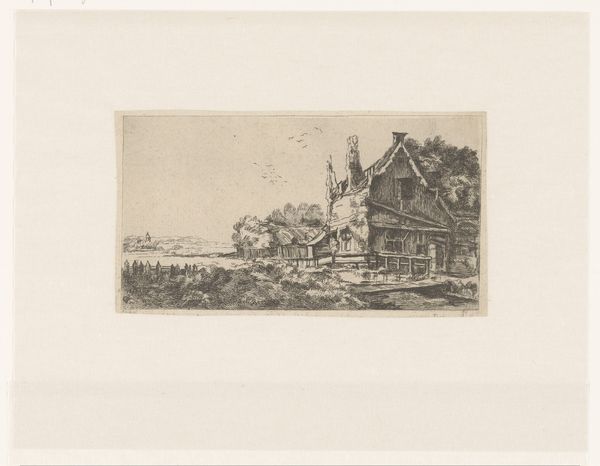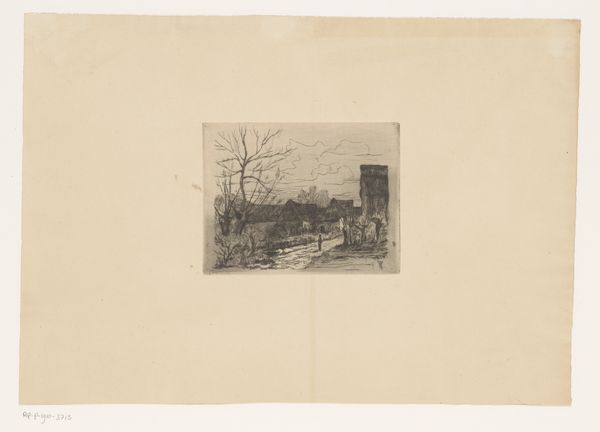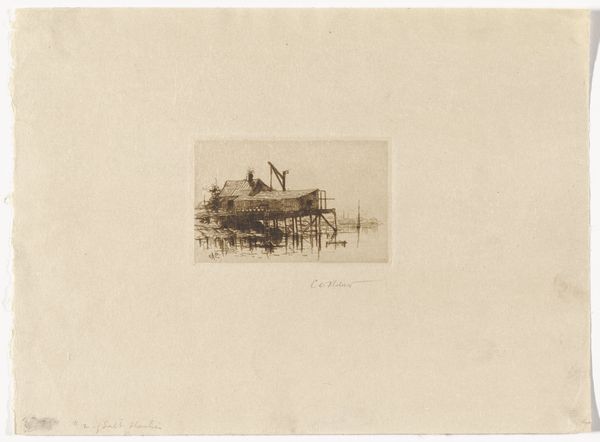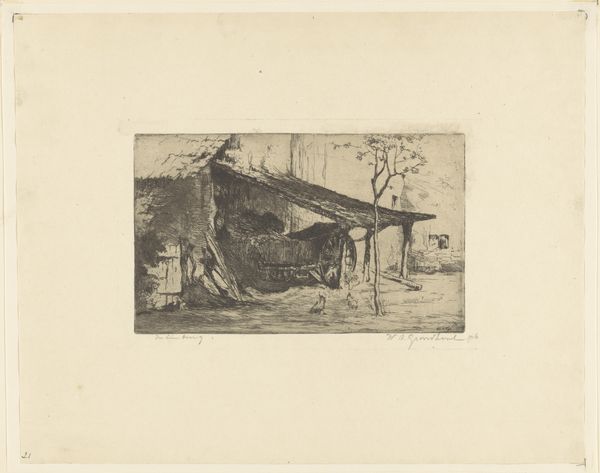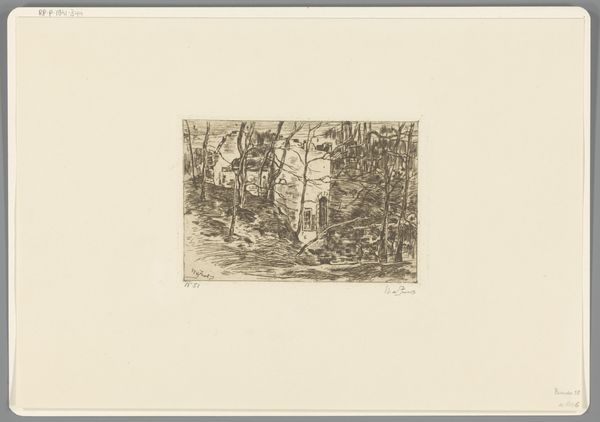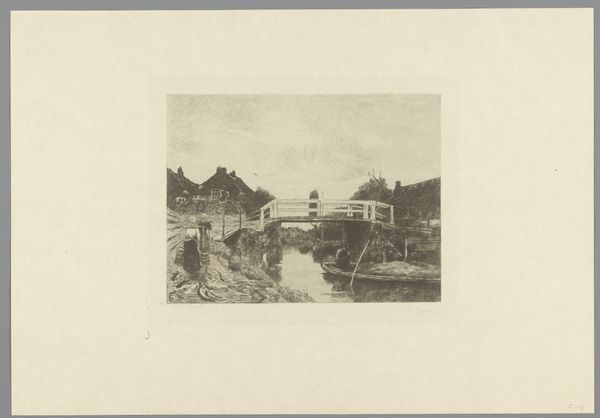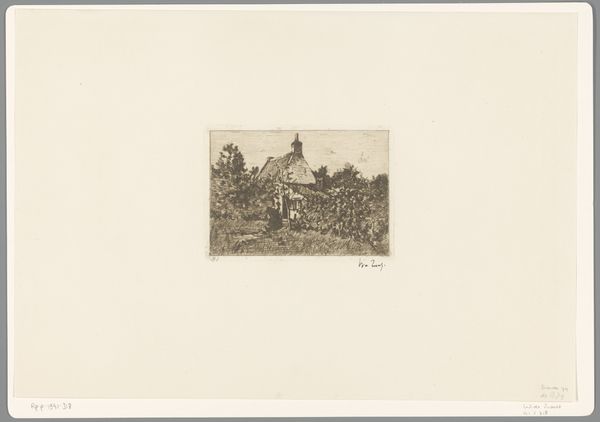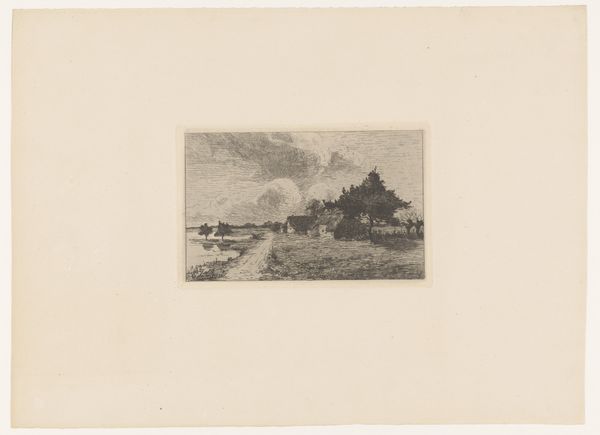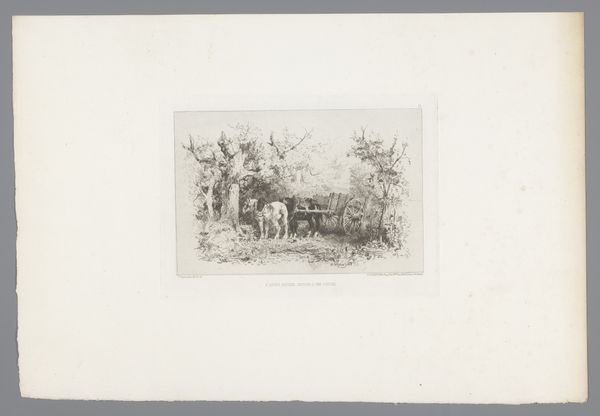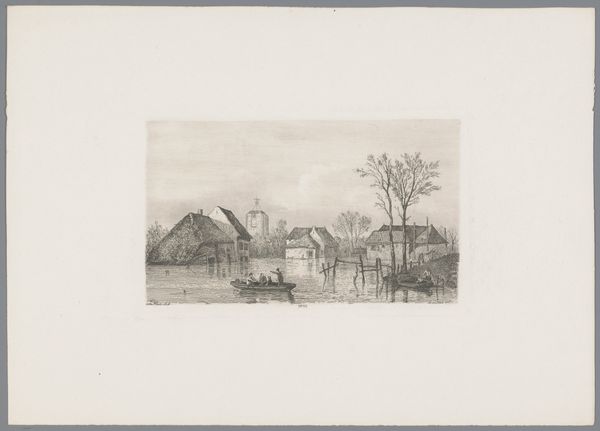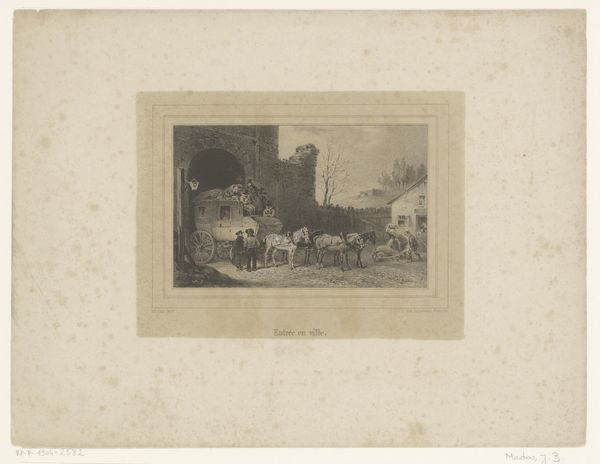
Dimensions: height 135 mm, width 215 mm
Copyright: Rijks Museum: Open Domain
Willem de Zwart made this etching, "Coaches in a Street in the Rain," in the Netherlands at the turn of the 20th century. It depicts a row of horse-drawn carriages waiting in the rain, their drivers huddled against the weather. The image suggests a society still reliant on animal power, yet structured around a clear social hierarchy. We can imagine the wealthy passengers inside the carriages while the working-class drivers endure the downpour. De Zwart's choice of etching, a printmaking technique, also speaks to the democratization of art. Unlike unique paintings, prints could be reproduced and distributed more widely, reaching a broader audience. To fully understand this work, we can turn to archives that document the economic conditions and social structures of the Netherlands at the time. By examining photographs, newspapers, and other historical sources, we can gain a deeper understanding of the role of art in reflecting and shaping social realities. The art historian's task is to uncover these layers of meaning, revealing how art is always embedded in a specific time and place.
Comments
No comments
Be the first to comment and join the conversation on the ultimate creative platform.


